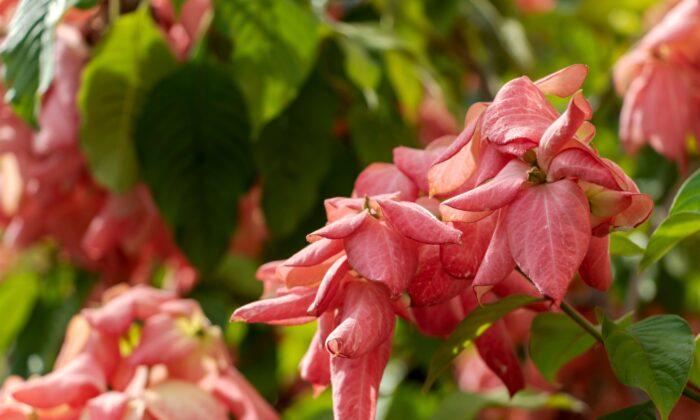Every few years, a new disease grabs all the headlines. Meanwhile, millions suffer from a potentially deadly and disabling infection that receives little attention.
Lyme disease can invade a person’s organs (including the heart and brain) and damage the immune system, leaving the body vulnerable to a host of many common health problems that can affect every system in the body. In fact, Lyme can manifest differently in different people, and it can sometimes take many years and visits to several different doctors before patients realize what is at the root of their health problems.
Evidence suggests that herbs may offer treatment advantages that antibiotics don’t.
This high performing plant is the West African shrub, Cryptolepis sanguinolenta (also known as nibima, Ghanaian quinine, or yellow-dye root). Cryptolepis is an herb best known in traditional Ghanaian medicine for treatment of malaria. Japanese knotweed (Polygonum cuspidatum) was also found to be highly effective. The five other herbs shown to kill Borellia include black walnut (Juglans nigra), sweet wormwood (Artemisia annua), cat’s claw (Uncaria tomentosa), rock rose (Cistus incanus), and Chinese skullcap (Scutellaria baicalensis).
The lab work was done at Johns Hopkins Bloomberg School of Public Health and funded primarily by the Bay Area Lyme Foundation—a nonprofit whose mission is to make Lyme a disease that is “easy to diagnose, and simple to cure.” It may sound simple, but this mission is an ambitious one.
Testing
Conventional tests used to identify the disease are often unreliable. And even after several courses of antibiotics, the symptoms, and the bacteria that causes them, may still persist. Some experts estimate that at least 2 million Americans may be suffering from debilitating long-term complications because of Lyme disease.But health officials don’t typically discuss or acknowledge these complications.
A recent report from the CDC states that “Lyme disease can be treated successfully with a few weeks of antibiotics.” Doctors and patients, however, often confront a different reality. Because of the treatment challenges of Lyme, many patients now turn to herbal remedies as a way to fill the void left by often unsuccessful and inherently depleting antibiotic regimens. One of these doctors is Sunjya K. Schweig, a contributing author on the herb study, and scientific advisory board member at the Bay Area Lyme Foundation.
Schweig says his study tested 14 different herbs or natural remedies that many doctors already use in clinical practice for treating Lyme. Although seven of these remedies didn’t demonstrate an ability to kill Borellia in test tubes, Schweig explains that they may still have benefits in practice.
The Epoch Times talked to Schweig about his study, and the role herbs can play in Lyme treatment.
Developing scientific evidence is showing that this bacteria is capable of hiding out in body tissues where the immune system can’t find it. In addition, these areas frequently have poor blood supply, which makes it so the antibiotics can’t really get to them either.
There are doctors who treat based on the patient’s clinical response and use antibiotics or herbal treatments for a much longer term, and follow the patient’s symptoms and recovery.
Unlike bacteria like strep, which is rapidly dividing and usually effectively treated with antibiotics, Borrelia is more persistent, like a TB or leprosy type of bug. There are many examples in the medical literature and in treatment protocols for having much longer duration treatment in these types of cases, frequently using multiple medications in combination.
Of course, antibiotics are not without their risks. Today we have increased appreciation for the benefits and importance of the microbiota, and we don’t want to disrupt this if we can avoid it. I think that’s where herbal medicines have a really interesting role to play.
It’s related to syphilis. Borrelia bacteria and syphilis bacteria are cousins of each other, and it’s well understood from the literature that “to know syphilis is to know all of medicine,” because of the fact that it can basically affect any body system. There are different stages of illness: acute, intermediate, and a later stage which has more neurological complaints, and more musculoskeletal complaints.
The Borrelia bacteria is very similar to syphilis. However, it’s much more genetically complex. It has a variety of different ways it can trick the immune system, hide out, and basically shape-shift.
When there is an immune attack on Borrelia bacteria, it changes its surface proteins to hide or cloak itself. The immune system looks for the target that it saw previously, to which it had generated the appropriate antibodies. But this bacteria pulls in these surface flags and puts out different ones over time, so the immune system gets confused and eventually gives up. That’s just one of the techniques the bacteria uses to persist. It can also go inside of cells and hide out there. It can hide in the joint tissue, synovial tissue, or around nerves in the myelin, where the immune system has trouble finding it. We think it can also form a kind of cyst, basically a hibernating form which makes it very, very difficult to attack. So once the immune system forgets about it, then the bacteria can come back out again.
The finding we showed with Cryptolepis against Borrelia was a new contribution to the field, so we were really excited about that. It was one of the most active herbs in the study, and the only one in this study that showed the ability to eradicate the stationary phase of the bacteria and to prevent regrowth of the bacteria.
But it is important to remember that this is a test tube study, where we put in the different control solutions of the herbs, and then counted how many of the Borrelia are left over.
It’s really important to me to make this differentiation, because I really respect these plants. There’s a lot of things that happen in the body with an herb’s activity which may or may not be related to its ability to kill the Borrelia. A lot of herbs work with immune modulation, or anti-inflammatory, or anti-cytokine pathways, just to name a few.
Some of the plants might not do a great job killing Borrelia in the test tube, but could still be a very good herb for treating Lyme. These herbal medicines may be able to work through pathways that only manifest within the living organism, and that’s not going to happen in a test tube separate from the immune system function.
Herbal medicines really work in synergy in the body. When you combine herbs, you can create further synergies where you can leverage the additive effects. So that complexity and layering, where you have many active components, has a lot of wonderful effects. What we see frequently is that the disease has less resistance to the herbs because of how complex and nuanced their mechanisms of action are, and how many different pathways that they’re hitting. As opposed to the antibiotics, where it can frequently be easier to develop resistance.
In fact, many doctors will use multiple antibiotics together and even do rotation protocols for increased efficacy, given the complex nature of the pathogens and the multiple bugs that can be present. And I have seen that help some patients. But antibiotic resistance is a huge problem in our world. We’re running out of antibiotics to use and the development of new ones is slow.
I think if we can find solutions in plant-based medicines that can be a really critical avenue for helping a lot of patients.
And they certainly do make a lot of money. They can patent those medicines, and keep those patents for a good amount of time and really generate huge revenues.
But on the plant side, unless you come up with something completely novel, it’s hard to patent that and protect it. Research on herbs happens more in the academic setting, in the lay public, and in the clinics. But it’s not a big business. There’s not a lot of money to be made. It doesn’t have the profit motive.
One problem with Lyme disease research in general is that there hasn’t been adequate funding coming from the government. It hasn’t really been recognized as that significant of a problem as we know it is. Fortunately, this is starting to shift. We’re starting to see more research dollars coming in, and more recognition, especially in the U.S. government. But up until now, it’s really just been private organizations, like the Bay Area Lyme Foundation, who have really driven the agenda. They have raised almost $30 million dollars for Lyme disease research. They are the No. 1 funder of Lyme disease research in the world. They work to stay clear of the debate in the medical field.
The idea is to move past the controversy, let the science speak for itself over time, [and] keep publishing studies and eventually affect change on the academic and governmental levels, so that we can get more funding to help deal with this incredibly complex and devastating epidemic that we’re seeing.







Friends Read Free